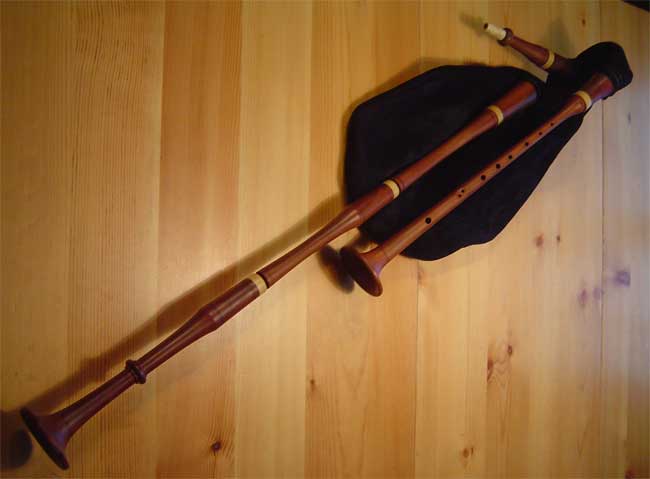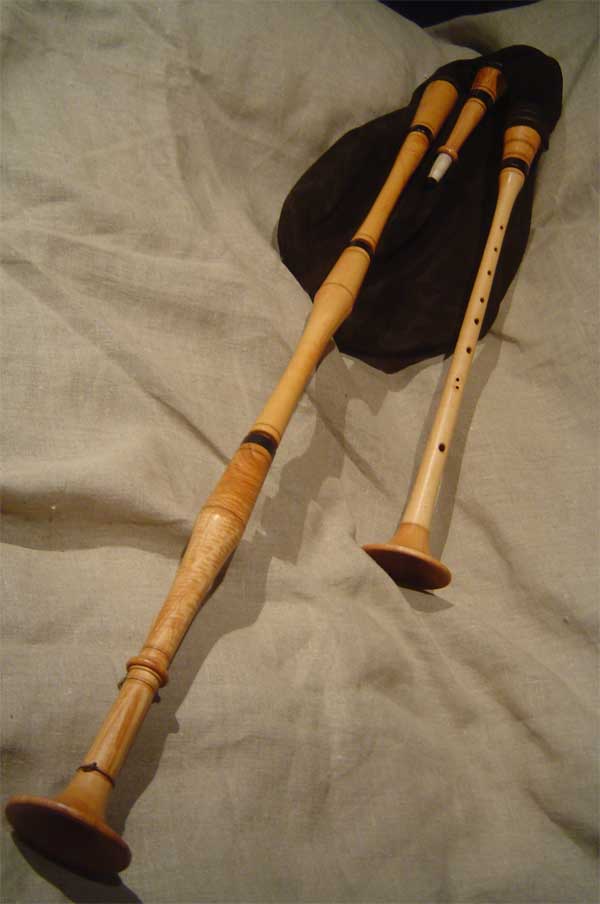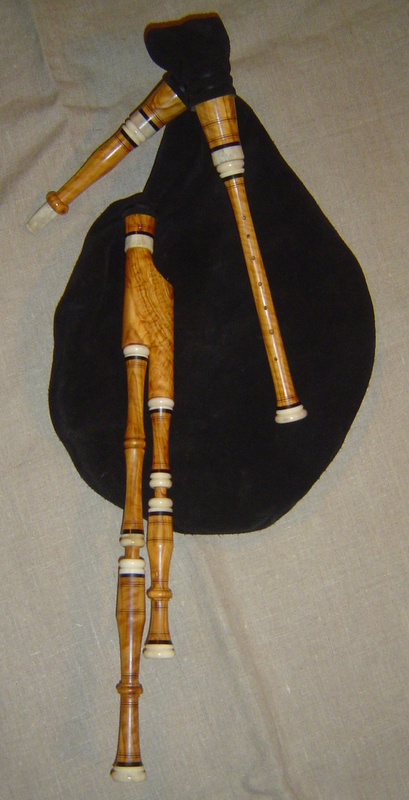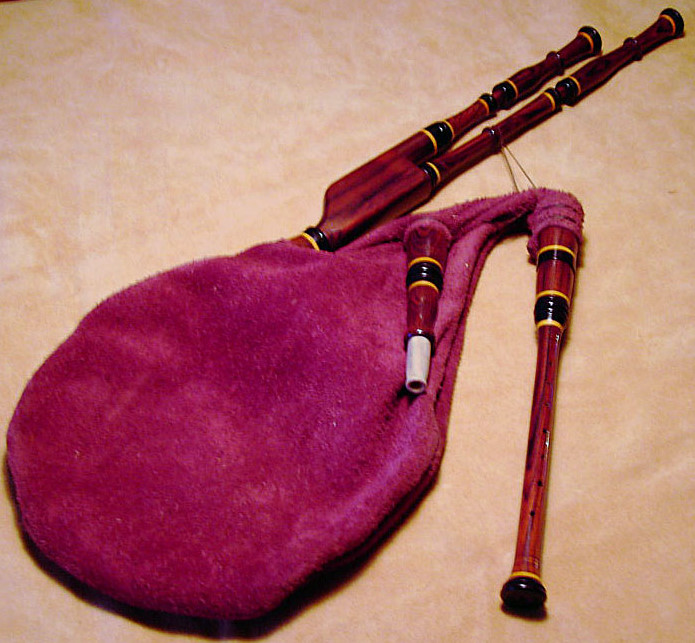
Medievalpipes
Medievalpipes
When I developed my Medievalpipes I wanted to build an historical instrument with the typical appearance and sound of that era
but at the same time something which considerably increased the musical possibilities.
The conical chanters, which have a double reed,
can be overblown giving a range of 1½ octaves.
Furthermore nearly all semi-tones are possible.
The Medievalpipes have, as a rule, only one (more loud-sounding) drone, with a single reed.
The drone is tuned two octaves under the chanters’ lowest tone ("6-fingering").
The Medievalpipes have a beautiful medieval sound funnel,
which works, to some extent, as an amplifier.
The instrument is usually built in the following keys:
- A/D
- G/C
- F/Bb
- D/G
(6-fingering/3-fingering)

Medievalpipes

Hümmelchen
Hümmelchen
The Hümmelchen is a smaller, soft renaissance bagpipe. My model is a relatively free reconstruction after M Praetorius’ drawing from the book Syntagma Musicum (Wölfenbüttel,1519). The instruments’ chanter is similar to a curved-horn in both sound and construction (but not in appearance, it is not curved) it is cylindrical drilled and the sound is produced by a relatively large double reed.
The drones are usually tuned in fifths but even octave tuning is possible, or as a student model with only one drone.
Contrary to all my other bagpipes the Hümmelchen is played with recorder fingering, The chanter is diatonic, but some semi-tones also work. There is an additional choice of a special capsule-system which makes it possible to play directly on the chanter, like a sort of ”mini” shawn(an older type of oboe).
Four different chanters are available:
- Soprano C/F, (c-d')
- Soprano D/G, (d-e´)
- sopranino F, (e' - f'')
- Alto F/B, (F-g)

